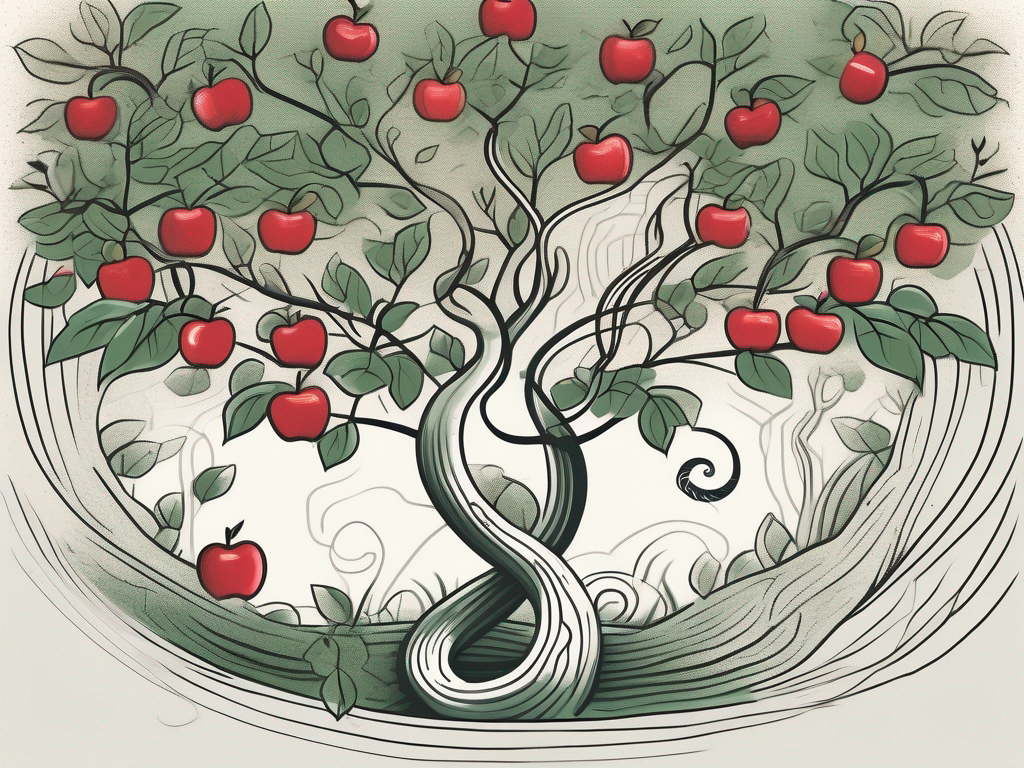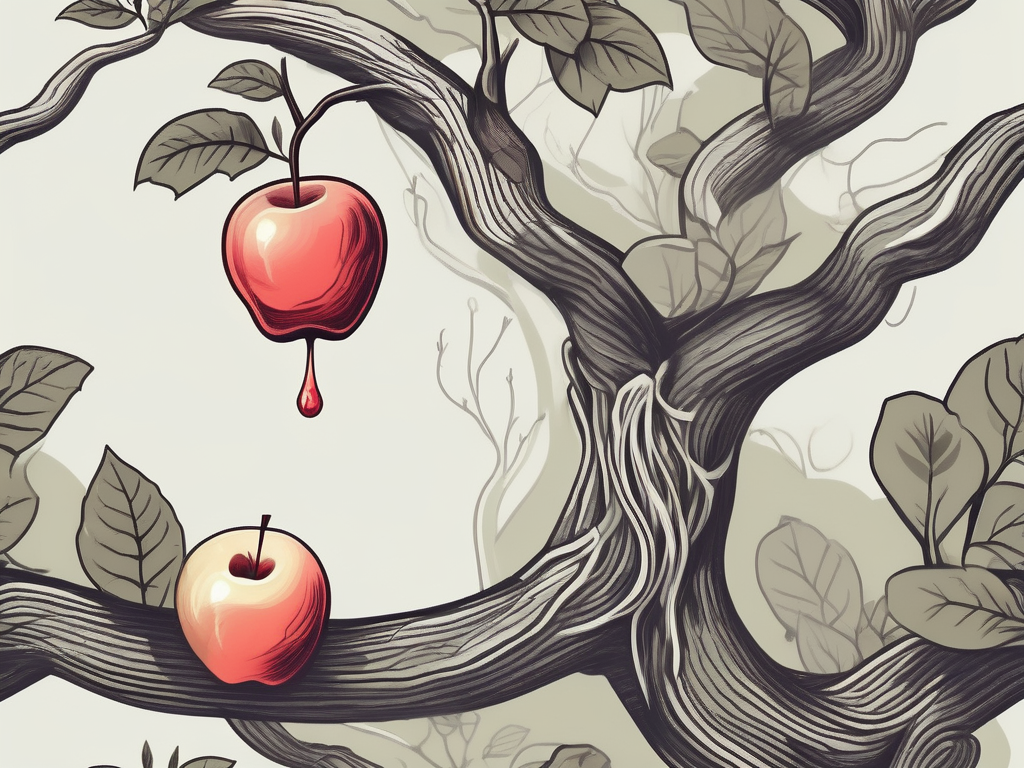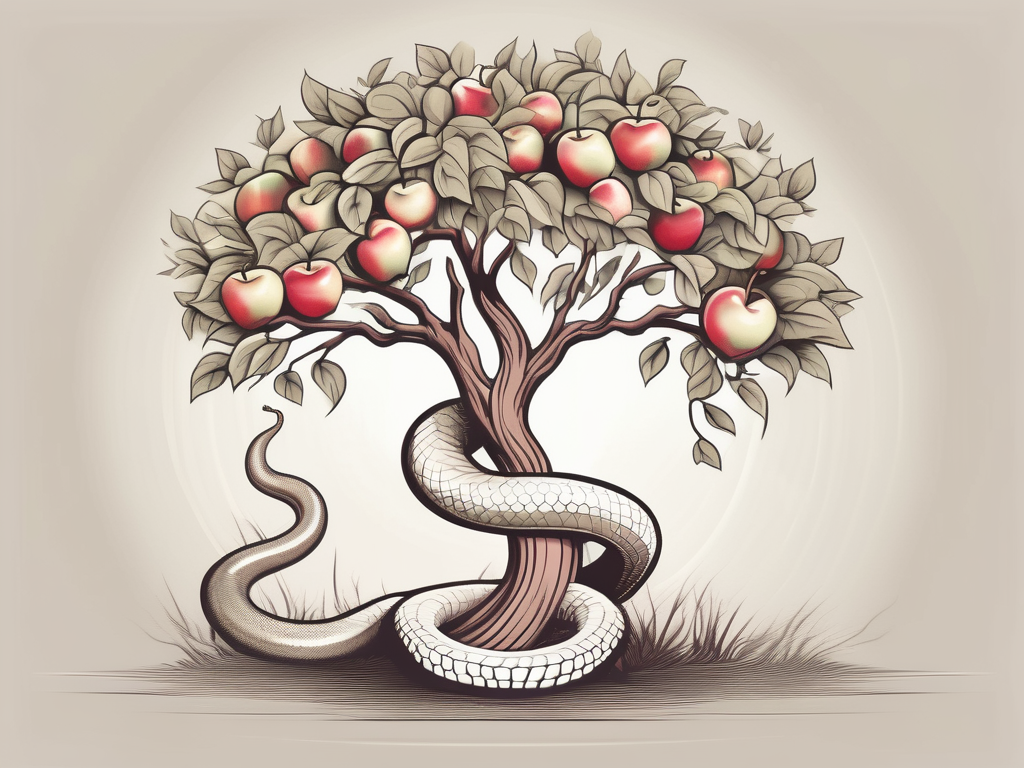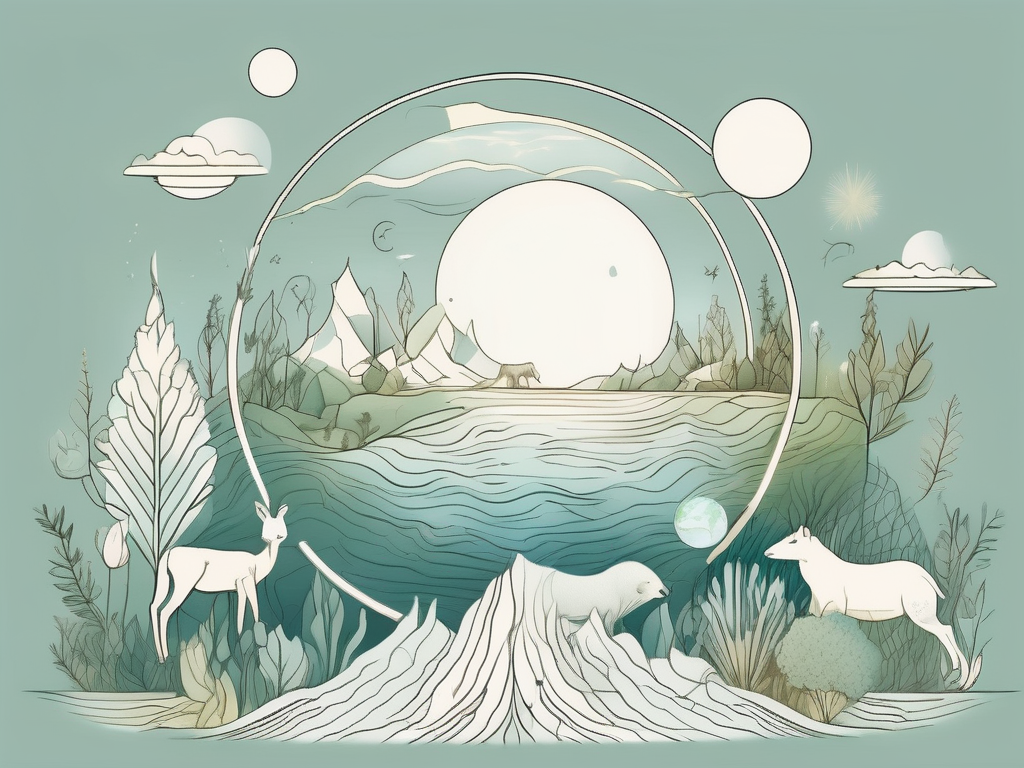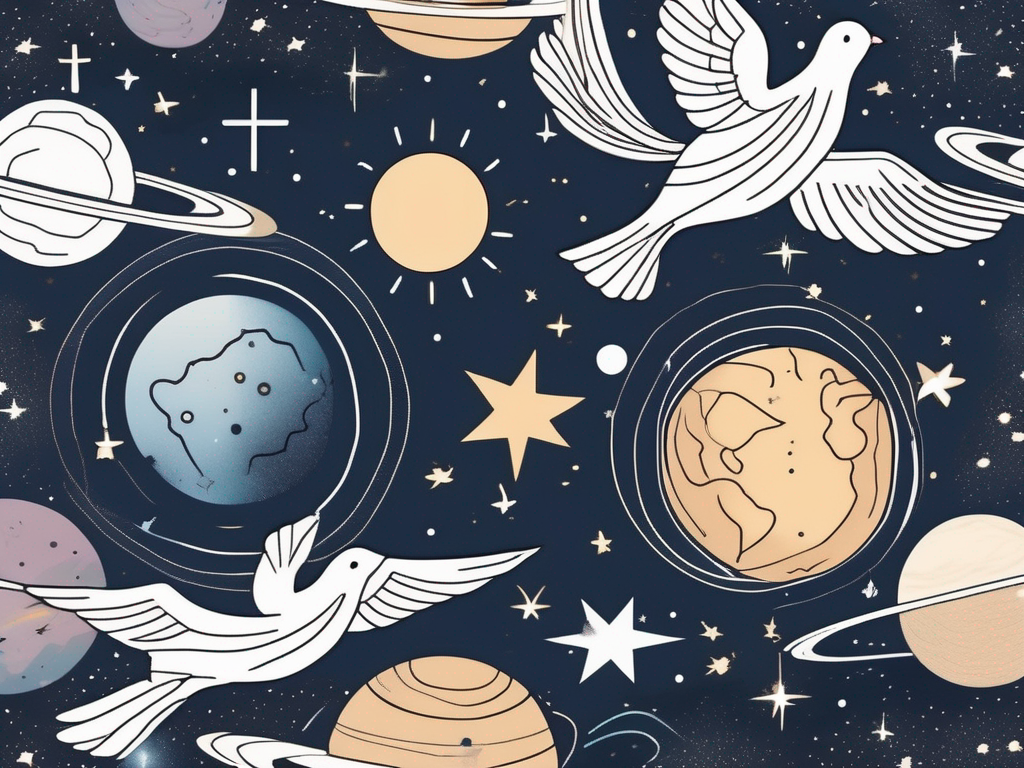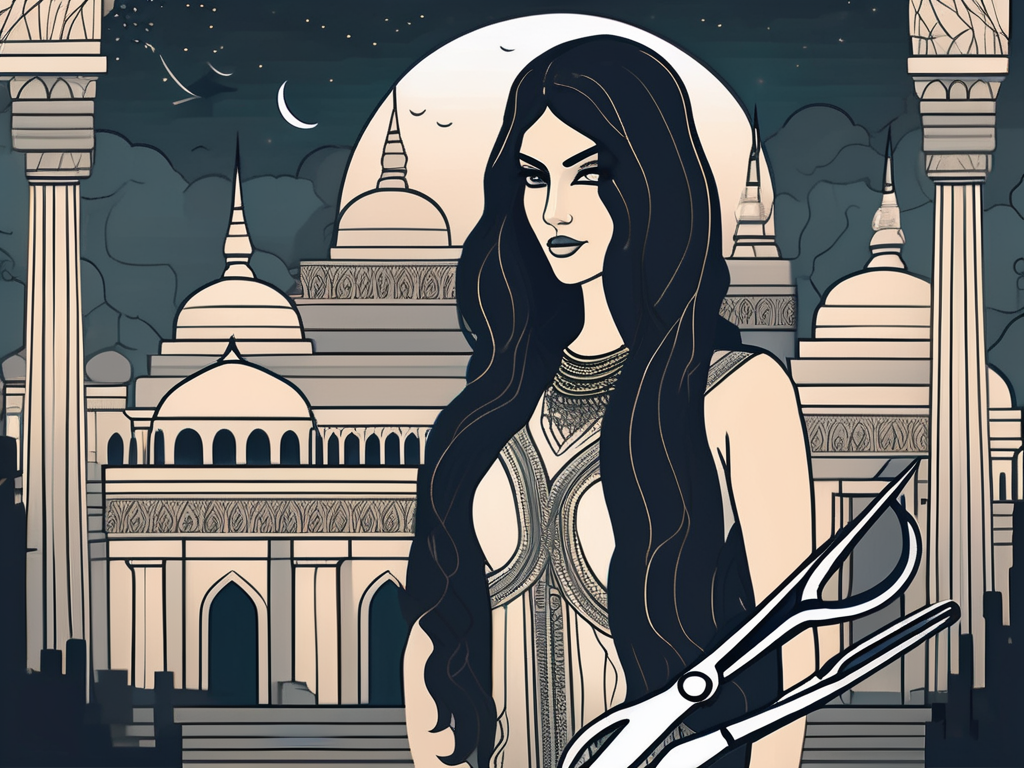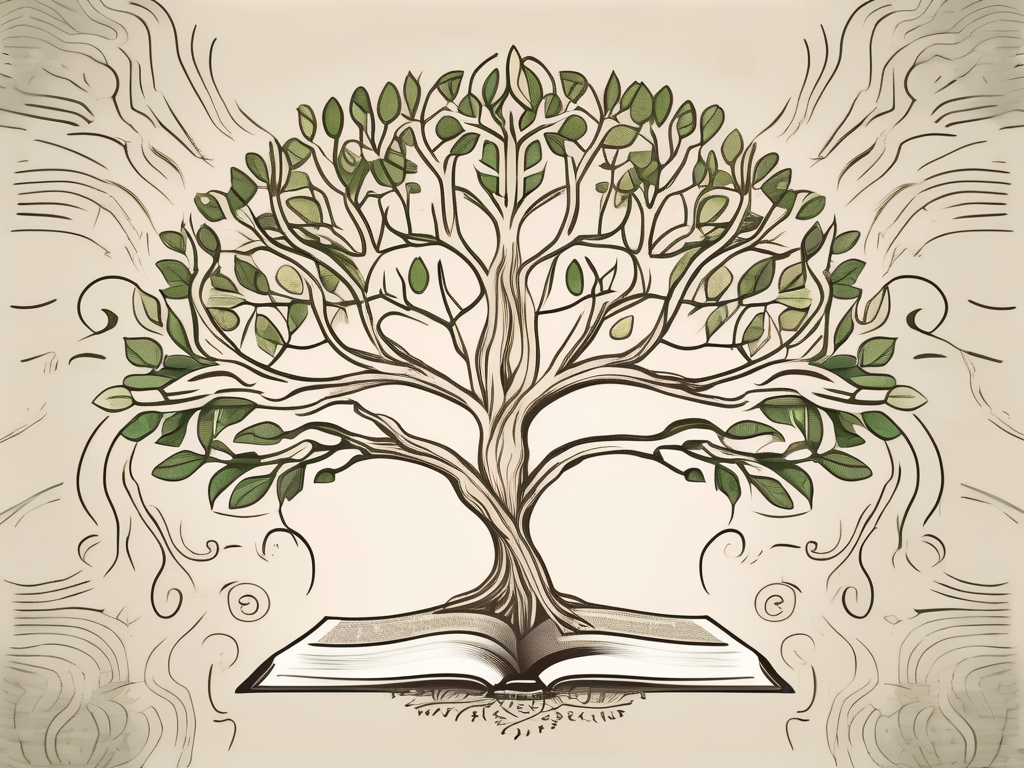Welcome to the captivating tale of Adam and Eve, a story that has fascinated humans for centuries. In this article, we will explore the Genesis narrative, examine the symbolism behind the forbidden fruit, reflect on the consequences of their disobedience, delve into various theological perspectives, and even touch upon modern interpretations and controversies surrounding this ancient story.
Understanding the Genesis Narrative
At the heart of the Adam and Eve story lies the mesmerizing account of their creation. According to the Bible, God molded Adam from the dust of the earth and breathed life into him, making him the first man. This vivid imagery sets the stage for the events that would shape the course of human history.
But let us delve deeper into the intricacies of this profound narrative. Imagine the moment when God formed Adam, meticulously shaping him from the very substance of the earth. Picture the divine touch, the breath of life that animated his body, infusing him with consciousness and purpose. It is a powerful image, evoking a sense of wonder and awe at the miraculous act of creation.
And then, from Adam’s side, God fashioned Eve, the first woman. This act of divine craftsmanship reveals the inherent unity and interconnectedness of humanity. As Eve emerged, a unique and complementary counterpart to Adam, the stage was set for the profound bond between man and woman, a partnership that would shape the destiny of humankind.
As the Genesis narrative unfolds, we are introduced to the Garden of Eden, an idyllic paradise where Adam and Eve resided. Imagine the sheer beauty and tranquility of this heavenly oasis. Picture the vibrant colors of the flowers, the gentle rustling of leaves, and the melodious songs of birds filling the air. It was a place of perfect harmony, where nature and humanity coexisted in blissful union.
Within this enchanting garden, two trees held significant importance. The Tree of Life, with its branches reaching towards the heavens, symbolized the eternal nature of existence. Its fruit, if consumed, would grant immortality, a tantalizing prospect that beckoned Adam and Eve with its promise of everlasting life.
Yet, alongside the Tree of Life stood the Tree of the Knowledge of Good and Evil. This tree bore forbidden fruit, a fruit that held the power to bestow knowledge and wisdom upon those who dared to taste it. Its allure was undeniable, for it represented the potential for human beings to comprehend the complexities of morality and discern between right and wrong.
Thus, the stage was set for a profound test of human will and obedience. Adam and Eve, surrounded by the beauty and abundance of the Garden of Eden, faced a choice that would forever alter the course of humanity. Would they succumb to the temptation of the forbidden fruit, or would they remain faithful to God’s command?
These questions, woven into the fabric of the Genesis narrative, invite us to reflect upon the nature of human existence, the complexities of free will, and the eternal struggle between temptation and righteousness. The story of Adam and Eve serves as a timeless reminder of the profound choices we face in our own lives and the consequences that may follow.
The Serpent’s Temptation
Enter the cunning serpent, a central figure in the genesis of humanity’s fall from grace. The serpent, often associated with deception and temptation, engaged in a conversation with Eve, planting the seeds of doubt and curiosity within her.
As the serpent slithered through the lush Garden of Eden, its scales glistening under the warm sunlight, it approached Eve with a sly smile. Its eyes, filled with cunning and mischief, locked onto hers, drawing her into its web of deceit. The serpent’s voice, smooth as silk, whispered seductive words into Eve’s ear, enticing her with promises of forbidden knowledge and hidden truths.
Eve, innocent and curious, listened intently as the serpent spun its web of lies. Its words, like a sweet melody, resonated within her, stirring a desire to explore the boundaries of her existence. The serpent knew that by appealing to Eve’s innate curiosity, it could manipulate her into taking the fateful bite.
The Forbidden Fruit: Symbolism and Interpretations
The forbidden fruit has been the subject of much speculation and interpretation. Some scholars believe it represents the experience of moral awakening, symbolizing the acquisition of knowledge and self-awareness. Others argue that it represents the allure of temptation or the need for humans to exercise free will in their choices.
The fruit, hanging delicately from the tree, radiated an otherworldly beauty. Its vibrant colors and intoxicating aroma beckoned to Eve, captivating her senses. As she reached out to pluck it from its branch, a surge of anticipation coursed through her veins. The forbidden fruit, a symbol of both temptation and enlightenment, held the power to forever change the course of human history.
Legend has it that the forbidden fruit possessed a unique taste, unlike anything Eve had ever experienced before. As she sank her teeth into its succulent flesh, a wave of sensations washed over her. The fruit’s juices, bursting with flavors both sweet and tangy, danced upon her tongue, leaving an indelible mark on her palate. In that moment, Eve’s eyes were opened to a world of knowledge and understanding, but at a great cost.
The Role of the Serpent in the Fall of Man
The serpent’s crafty manipulation ultimately convinced Eve to taste the forbidden fruit. She then shared it with Adam, violating the one commandment given to them by God. This act of disobedience had profound consequences not only for Adam and Eve but for all of humankind.
As Adam bit into the forbidden fruit, the weight of their transgression settled upon their souls. The once harmonious relationship between humanity and the divine was shattered, replaced by a deep sense of shame and separation. The serpent, having achieved its goal, slithered away, leaving behind a world forever changed.
From that moment on, humanity would be burdened with the knowledge of good and evil, forever grappling with the consequences of their choices. The serpent’s temptation had set in motion a chain of events that would shape the course of human history, leading to a constant struggle between the desires of the flesh and the pursuit of righteousness.
The Consequences of Disobedience
As a result of their disobedience, Adam and Eve faced severe consequences that forever altered their lives and the course of humanity. God pronounced punishments that transformed their existence from one of bliss to one of struggle.
However, the consequences of their disobedience extended far beyond the immediate repercussions. Let us delve deeper into the profound effects that Adam and Eve’s actions had on their lives and the world around them.
The Punishment: From Immortality to Mortality
One of the most significant consequences was their transition from immortality to mortality. Adam and Eve, once destined to live forever, now faced the inevitability of death. This punishment served as a stark reminder of their blatant disobedience.
Imagine the weight of this realization as they came to terms with the fact that their lives would eventually come to an end. The knowledge of mortality must have cast a shadow over every decision they made, reminding them of their fall from grace.
The Expulsion from Eden
Furthermore, God expelled Adam and Eve from the paradisiacal dwellings of Eden, forever severing their connection with the Tree of Life. Banished from their home, they were left to grapple with the harsh realities of a world tarnished by sin and suffering.
Picture the scene as they were forced to leave behind the lush gardens and perfect harmony they had once known. The expulsion from Eden not only stripped them of their physical comfort but also shattered their spiritual connection with God. They were left to wander in a world tainted by their own disobedience, grappling with the consequences of their actions.
As they ventured into the unknown, Adam and Eve must have felt a profound sense of loss and longing for the paradise they had lost. The consequences of their disobedience were not limited to their own lives but also impacted the lives of their descendants, who would inherit a world marked by sin and hardship.
It is crucial to recognize the magnitude of the consequences that Adam and Eve faced. Their disobedience had far-reaching effects that continue to shape the human experience to this day. The transition from immortality to mortality and the expulsion from Eden were not mere punishments but profound transformations that forever altered the course of humanity.
Theological Perspectives on Adam and Eve’s Story
Throughout history, various theological perspectives have emerged, offering unique interpretations of Adam and Eve’s story. Christianity, Judaism, and Islam each have their own views on the theological significance of this tale.
However, the story of Adam and Eve goes beyond the religious texts and has captivated the minds of scholars and theologians for centuries. Let us delve deeper into these perspectives and explore the rich tapestry of interpretations surrounding this ancient narrative.
The Original Sin in Christianity
In Christianity, the story of Adam and Eve is often associated with the notion of original sin, where their disobedience became the inheritance of all humanity. This concept forms the basis for the narrative of salvation through Jesus Christ, who is believed to redeem mankind.
Within this framework, theologians have debated the nature of this original sin. Some argue that it is a hereditary guilt passed down through generations, while others view it as a state of spiritual corruption inherited from our first ancestors. These discussions have led to profound reflections on the human condition and the need for divine grace.
Adam and Eve in Jewish Tradition
In Jewish tradition, their story represents the pivotal moment when humans became responsible for their own actions and choices. It serves as a reminder of humanity’s capacity for good and evil, and the importance of engaging in righteous behavior.
Rabbis and scholars have explored the moral lessons embedded in the narrative, examining the consequences of Adam and Eve’s disobedience and the subsequent exile from the Garden of Eden. They have contemplated the significance of free will and the constant struggle between our inclinations towards righteousness and our propensity for wrongdoing.
Islamic Interpretation of Adam and Eve’s Fall
Islamic tradition also embraces the story of Adam and Eve, emphasizing their responsibility for their actions. It highlights the significance of repentance and the potential for redemption, reflecting an ongoing theme of mercy and forgiveness within the Islamic faith.
Islamic scholars have delved into the details of Adam and Eve’s story, contemplating the lessons it imparts. They have explored the concept of human fallibility and the importance of seeking forgiveness from Allah. These reflections have given rise to a profound understanding of the human condition and the role of repentance in the journey towards spiritual growth.
As we explore these theological perspectives, it becomes clear that the story of Adam and Eve transcends religious boundaries. It speaks to the universal human experience of grappling with moral choices, the consequences of our actions, and the potential for redemption. Through the centuries, theologians and scholars have found inspiration in this ancient tale, offering us a deeper understanding of ourselves and our place in the world.
Modern Interpretations and Controversies
The tale of Adam and Eve continues to captivate the collective imagination, sparking a myriad of modern interpretations and controversies. Let’s explore a couple of these perspectives.
Feminist Views on Eve’s Role
Feminist interpretations have sought to challenge the traditional portrayal of Eve as a temptress and instead focus on her agency and courage to pursue knowledge. These interpretations highlight the importance of women’s voices and reclaim Eve as a symbol of empowerment.
The Story of Adam and Eve in Popular Culture
The story of Adam and Eve has also permeated popular culture, finding its way into literature, art, and film. From John Milton’s epic poem “Paradise Lost” to the iconic painting by Michelangelo in the Sistine Chapel, this tale continues to inspire artistic expression and philosophical contemplation.
Scientific Perspectives on the Adam and Eve Narrative
While the story of Adam and Eve is predominantly approached from a religious perspective, scientific discussions have arisen regarding the existence of a single pair of human ancestors. Genetic research and evolutionary theories offer alternative explanations, challenging the literal interpretation of this ancient narrative.
In conclusion, the tale of Adam and Eve is a timeless saga that resonates with people from diverse backgrounds. It explores the themes of creation, temptation, and the consequences of disobedience, while also providing a platform for theological, feminist, and scientific discussions. Whether you approach this story from a religious or secular standpoint, its enduring intrigue lies in its ability to provoke profound questions about the human condition, morality, and our place in the world.
